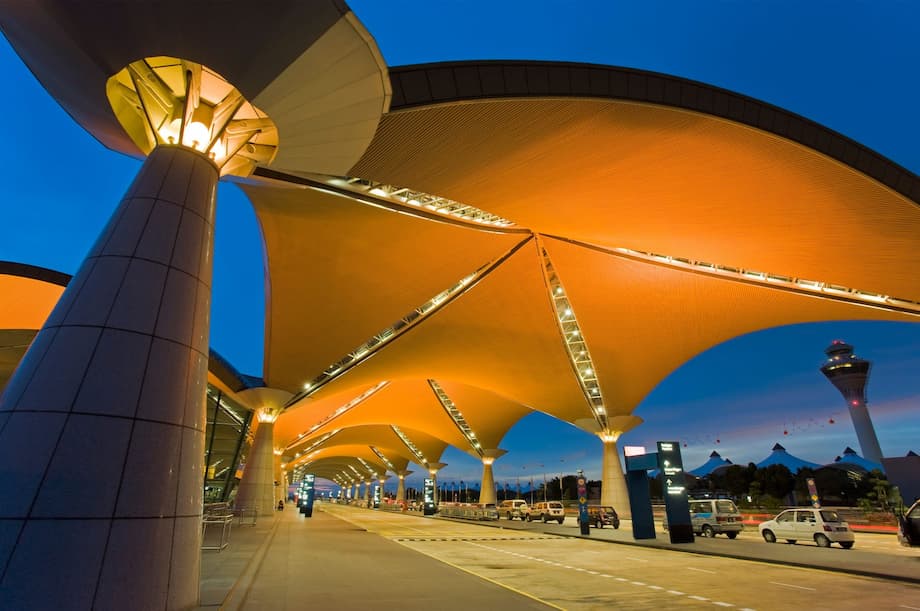A hub with a broken transfer system
Kuala Lumpur International Airport is Malaysia’s main gateway, a showcase for the country and a crucial connector for the region. It serves tens of millions of passengers each year and anchors the networks of Malaysia Airlines, AirAsia, Batik Air Malaysia and others. Yet a growing chorus of travelers and aviation specialists say the experience at both terminal 1 and terminal 2 is slipping. Long immigration lines, crowded halls and recurring service disruptions are wearing down confidence. Above all, there is a missing link that undercuts the airport’s claim to be a true global hub, there is no way for passengers to move securely between the two terminals without exiting to the public side.
- A hub with a broken transfer system
- Are crowding and queues getting worse
- Why seamless transfers define a real hub
- What passengers face when moving between terminals
- Reliability hits that wear down trust
- Fixes on the table, proof of concept for airside transfers
- Airlines fill gaps for premium flyers, most still wait
- How KLIA compares with regional leaders
- What would move the needle for passengers
- Key Points
The scale of KLIA is not in question. According to publicly available data, the airport handled more than 57 million passengers in 2024. Terminal 1, designed by Japanese architect Kisho Kurokawa, remains the flagship for full service operations and long haul connections. Terminal 2, purpose built for low cost carriers such as AirAsia, has modern retail space and capacity to spare. Yet the mix of design choices and operational constraints has created a poor fit for seamless transfers. Passengers who land in one terminal and depart from the other must clear immigration, collect bags, travel landside by shuttle bus or rail, and then check in again. For a first time visitor or a family with luggage, the process is exhausting and risky.
Many airports that compete with KLIA have designed around this exact problem. Changi in Singapore, Dubai International and Hamad International in Doha route transit passengers within a secure zone, often with an automated people mover, across concourses and terminals. At KLIA, moving between terminal 1 and terminal 2 involves leaving the secure side entirely. Travel advisers commonly warn that a 2.5 to 4 hour window is needed for such a transfer. That single structural gap, combined with reliability issues on the people mover inside terminal 1, is the core reason many travelers now avoid booking self connections that touch both terminals.
Are crowding and queues getting worse
Passenger volumes have recovered strongly, and pressure points have become visible. Industry reporting indicates that terminal 1 handled around 30.7 million passengers in 2024, which exceeded its optimized operating capacity, while terminal 2 saw about 26.4 million, below its design limit. This uneven load pushes queues in arrival halls, especially at immigration counters for foreign visitors. Queue management and the placement of counters, combined with peak arrival patterns, are now central to how passengers rate their experience on landing.
Check in technology has expanded, but machines alone cannot wipe away bottlenecks. Self check in kiosks and bag drop belts still depend on staffing and exception handling, from document checks to baggage size issues. Security screening at many gates in terminal 2 adds friction late in the journey. A traveler might buy water in the departures area, then find that the bottle must be discarded during gate screening. The liquids rule for carry on bags, usually capped at 100 milliliters per container, is standard worldwide, but the timing of screening can make the experience more frustrating. Airports that centralize security often provide water fountains and clear options after screening. Gate based screening places the stress point near boarding time when options are fewer.
Terminal 2’s circulation paths also draw criticism from frequent users. Retail lines much of the route, and walking distances to certain gates are long. Corridors can feel narrow when traffic peaks. Any benefits from shopping revenue are eroded if passenger flow and wayfinding suffer. Travelers want wide passageways, straight routes to gates and enough seating near boarding areas. When the path becomes a gentle maze, even a modern terminal can feel tiring.
Why seamless transfers define a real hub
Hub airports succeed when passengers can move quickly and predictably between flights without leaving the secure side. That relies on three basic ingredients. First, airside connectivity between terminals or concourses, usually via an automated people mover or secure buses. Second, baggage systems that can accept transfer bags from any inbound flight and route them to any outbound flight. Third, airline and airport processes that handle document checks and boarding pass issuance for through passengers, even on mixed carriers.
What happens when the link is missing
Without a secure connection, a transfer turns into two separate trips. That means extra time, extra steps and extra risk. Travelers moving between KLIA’s terminals typically face the following path:
- Disembark at terminal 2 or terminal 1 and proceed to immigration.
- Clear immigration, collect checked baggage and pass customs.
- Travel landside by shuttle bus or by the express rail link to the other terminal.
- Find the check in area and complete check in and bag drop for the next flight.
- Clear security and, if needed, immigration again before boarding.
Travel forums that track real world experience caution against tight layovers across terminals. One TripAdvisor forum adviser explained the risk for tight connections and urged a generous time buffer.
There is no airside connection between KLIA and KLIA2. It is recommended to allow at least 4 hours between flights when transferring between KLIA2 and KLIA1.
That advice aligns with the logic of the process. A delay at any single step, immigration queues, baggage wait times, ticketing issues, can topple the entire plan. Few airlines sell a single booking reference for itineraries that mix terminal 1 and terminal 2, which also means fewer options if a connection fails.
What passengers face when moving between terminals
The landside options are clear enough but not designed for speed. The express rail link connects terminal 1 and terminal 2 within minutes, but it requires a ticket and time to reach the platforms. Airport shuttle buses run loops that include the long term car park and both terminals, which helps price sensitive travelers or those with heavy bags, but the waiting time and dwell time can be hard to predict in peak periods. These are fine landside links for origin and destination traffic. They are not a substitute for a secure transfer system tailored to connecting passengers.
Another recurring complaint concerns the balance of customer space and retail space. Travelers say walking distances in terminal 2 are long both on arrival and at departure. Gate area seating can be tight. One visitor, posting in a Malaysia Reddit forum after a first trip, captured the frustration with late gate screening and water access:
A water bottle bought in the airport had to be thrown away at gate security, and there was no water fountain at the gate. Water is a necessity, and if you are in a situation where you cannot leave, it should be provided for free.
These are fixable pain points. They depend on terminal design, placement of fountains, signage and the timing of security. They also reflect planning priorities, how much walking the terminal expects of passengers and where commercial space takes precedence over flow.
Reliability hits that wear down trust
Inside terminal 1, the aerotrain that links the main building with the satellite terminal has been unreliable. After a stop start relaunch in mid 2025, the system suffered another breakdown in early August. Passengers were shifted to shuttle buses. The airport issued an apology and said a door malfunction caused a short suspension before service resumed. Even brief disruptions create ripples, missed flights for tight connections, crowding at bus bays and confusion about the best route to gates.
Terminal 2 has had its own bad days, including a power outage that raised questions about contingency planning. Large airports invest in redundancy for critical systems, from backup power to spare rolling stock for people movers. The goal is simple. If one component fails, no one should notice beyond a minor delay. When outages and stoppages recur, travelers lose trust and plan around the airport rather than through it.
Fixes on the table, proof of concept for airside transfers
Malaysia Airports Holdings Berhad, which operates KLIA, is now working with the Ministry of Transport on a proof of concept to enable secure transfers between the two terminals. Public reporting describes a plan to move passengers on the airside by coach, with screening completed once, and baggage routed directly between terminals. Experts quoted by Malaysian business media say the idea would help relieve terminal 1, which is running above its optimized capacity, by directing some connections through terminal 2, which has room to grow. The concept would also keep transfer times predictable and bring KLIA closer to best practice in the region.
Key challenges sit behind the scenes. Airline systems must talk to one another so that baggage can be tagged through without error. Ground handlers at both terminals need a shared process and shared accountability. At various points in the past, airlines raised concerns about costs and control. Recent signals are more positive. Reports indicate support from Malaysia Aviation Group, the parent of Malaysia Airlines, and growing alignment with low cost carriers. Still, a full rollout will require government endorsement, coordination across agencies and a clear timeline.
Airlines fill gaps for premium flyers, most still wait
While the airport works on a structural fix, some airlines have tried to ease the pain for their best customers. Batik Air introduced an upgraded private transfer service for business class passengers, using electric vehicles to move travelers between the main terminal and the satellite building during aerotrain suspensions. That keeps premium journeys on track within terminal 1. It does not help the mass of passengers who need to move between terminal 1 and terminal 2, and it does not replace the need for a dependable people mover inside terminal 1.
The wider solution depends on airline cooperation. Through checked baggage can spare passengers from reclaiming bags mid journey. Transfer desks can issue onward boarding passes even for partner carriers. Virtual interline platforms can bridge gaps between full service and low cost carriers, but without a secure link across terminals and a common baggage process, the risk still lands on the traveler. Most passengers will not book a self connection that requires a landside terminal change unless the time buffer is generous.
How KLIA compares with regional leaders
Changi Airport operates a simple idea at scale, keep transit customers inside the secure zone, connect terminals with a frequent train and make wayfinding effortless. Transfer counters are everywhere. Bags are tagged through even on mixed airline journeys backed by interline deals. Dubai International routes vast flows through concourses linked by an automated train, with minimum connection times published and achieved. Doha builds around a single large terminal with a people mover and short walking distances, designed for long haul to regional transfers. The lesson is that successful hub airports design for the transfer first, not as an afterthought.
KLIA has strengths that can be reclaimed. Terminal 1’s architecture remains striking, and its satellite terminal can handle heavy long haul operations when the people mover is reliable. Terminal 2 is roomy and efficient for point to point traffic. Where KLIA differs is the divide between the terminals and the late timing of security screening at many gates in terminal 2. With a secure inter terminal shuttle, steady aerotrain service and tighter queuing systems at immigration, KLIA would immediately feel more coherent to connecting passengers.
What would move the needle for passengers
The fixes are practical and do not require a new terminal to start making a difference. They call for aligned decisions and visible service upgrades in the next planning cycle. The aim is to spare travelers from landside terminal changes, shorten walks and reduce queuing surprises at the worst moments.
- Implement a secure airside shuttle between terminal 1 and terminal 2, with frequent service and clear wayfinding from arrival gates to transfer lounges.
- Integrate baggage transfer across terminals with common tracking, shared sortation and agreed service levels for all participating airlines.
- Strengthen transfer support points, staffed desks and digital kiosks where passengers can obtain boarding passes, rebook or get directions without leaving the secure side.
- Improve wayfinding and passenger flow in terminal 2, wider corridors to gates, more seating near boarding areas and more moving walkways on long routes.
- Stabilize the aerotrain with tested equipment, a published maintenance plan and a visible backup bus protocol for any suspension.
- Upgrade the e hailing pickup area at terminal 2 with more bays, shade, traffic marshals and live queue time displays. If a fee is charged per vehicle, ring fence part of the revenue for these improvements.
- Expand automated immigration gates and deploy more officers during peak arrival banks. Publish expected queue times on screens before passport control.
- Add water fountains near gate screening areas and after screening at terminal 2 so passengers can refill bottles before boarding.
Key Points
- KLIA lacks a secure transfer link between terminal 1 and terminal 2. Passengers must exit, reclaim bags and recheck, which undermines hub performance.
- Terminal 1 is operating above its optimized capacity, while terminal 2 has room to spare, leading to crowding in some areas and underuse in others.
- Travel advisers recommend at least 4 hours for landside transfers across terminals due to immigration, baggage and transport steps.
- Reliability issues persist, including an aerotrain breakdown soon after relaunch in mid 2025 and a recent power outage at terminal 2.
- Malaysia Airports and the Transport Ministry are testing a proof of concept for airside transfers by coach with integrated baggage handling.
- Airline cooperation on through checked baggage and transfer desk support is essential, as most carriers do not sell single bookings that mix the two terminals.
- Design choices in terminal 2, long walks, tight corridors, gate based screening and limited water access near boarding, add friction for passengers.
- Targeted upgrades, reliable people movers, secure inter terminal transfers, better queuing and improved ground transport zones, would deliver a clear lift in passenger experience.












